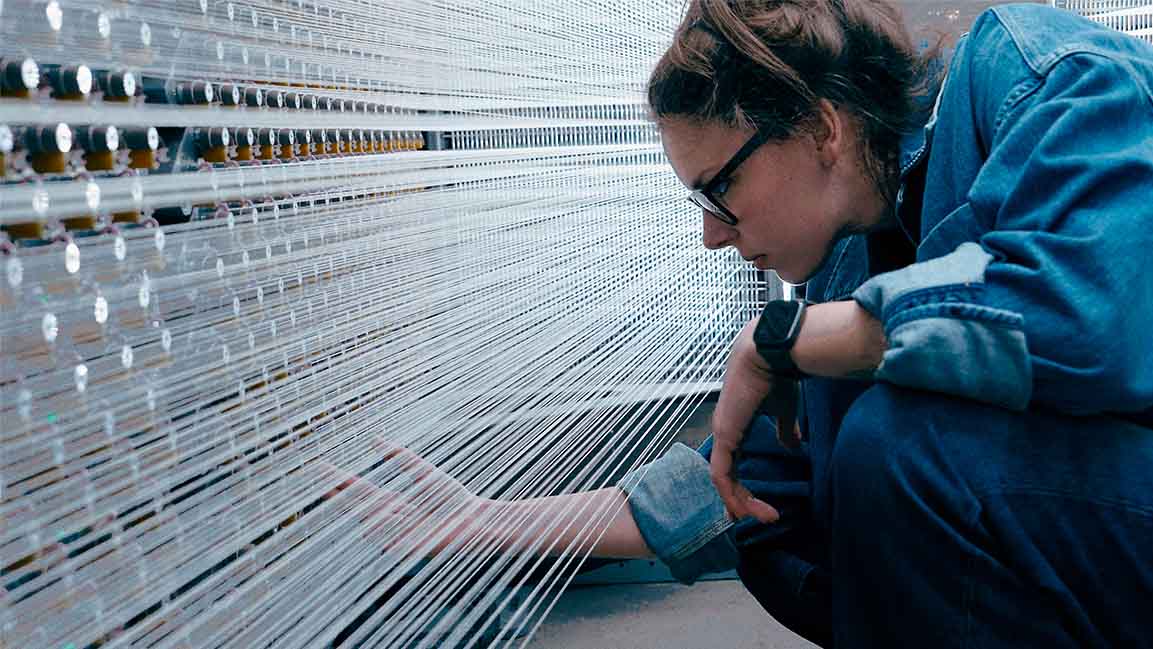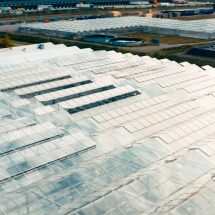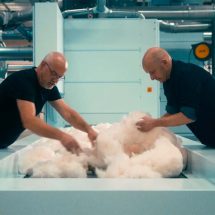- | 8:58 am
Someday your jeans could be grown in a greenhouse down the street
Dutch denim label G-Star Raw partnered with researchers to grow cotton for denim in a greenhouse. It might be the future of fashion.

Over the past few years, Patagonia, Citizens of Humanity, and Christy Dawn have started sourcing cotton from farms that use regenerative agriculture methods. But soon, sustainable fashion brands might also consider cotton from another source: a greenhouse. Dutch brand G-Star Raw wants to turn this into a reality.
The brand partnered with a Dutch university on a small pilot project to grow cotton in a greenhouse, then use it to create denim. The end result was five pairs of jeans, made from end-to-end entirely in the Netherlands. Now, G-Star Raw is exploring how to scale this production so that denim brands around the world can create locally made jeans that have a far smaller environmental footprint.

Photo: G-Star Raw
THE LOCAL JEANS CHALLENGE
Cotton grows best in very hot, humid conditions, which is why most of the world’s crops are grown in China, India, Brazil, and the American South. Northern Europe? Not so much.
This presents some complications for European brands like G-Star Raw, a denim brand founded in the Netherlands in 1986. Given the current global supply chain, it must source its cotton from far away, which means shipping cotton long distances, generating extensive carbon emissions. “It also makes traceability more complicated,” says Rebecka Sancho, G-Star’s head of sustainability. “And the first step to sustainability is traceability.” She also points out that new regulations are rolling out in the European Union that demand brands track the entire supply chain of their products.
So it was intriguing to Sancho when Wageningen University, which is globally recognized for its agricultural research, reached out to the brand. Researchers were interested in collaborating on an experiment to see whether it was possible to grow cotton in the Netherlands by using a greenhouse. And they wanted to quantify the environmental footprint of this cotton, as compared to traditionally grown cotton.

Photo: G-Star Raw
GROWING COTTON IN A GREENHOUSE
The project took place in a greenhouse in Bleiswijk. While cotton typically requires large plots of land, the greenhouse-grown cotton needs significantly less space because the plants grew much taller. Farm-grown cotton is around five feet tall, while greenhouse grown cotton is over 16 feet in height. The cotton also grows more efficiently because it is possible to control environmental conditions, including light, heat, and water. And while traditional cotton requires pesticides to keep pests and disease at bay, you don’t need to worry about these issues in a greenhouse.
The results of this pilot project were impressive. The greenhouse boosted cotton yields by 2,300%, compared to the same amount of land on a farm. Each plant produced nine to 12 times more cotton. And the controlled environment of the greenhouse meant that cotton could be grown for longer than usual. Traditional cotton also requires a lot of water to grow. It can take up to 10,000 liters of water to create one kilo of cotton. But in the greenhouse, the plants only required 800 liters of water using recycled rainwater for irrigation.
The researchers say the greenhouse approach generates far less carbon emissions. For one thing, the entire greenhouse can operate on renewable energy. And greenhouses don’t require any tilling of the soil, which release carbon into the atmosphere. It can be grown close to manufacturers who can turn it into clothing, reducing the emissions generated in transport.

Photo: G-Star Raw
A BETTER JEAN
In many ways, the greenhouse-grown cotton is even better suited to denim production. It is cleaner and whiter, which makes it easier to spin and dye. “We were extremely happy with the results,” says Willeke Hendriks, G-Star’s chief product officer. “It made us realize there was a lot of potential here.”
G-Star wanted to see if they could make an entire pair of jeans in the Netherlands. This is a tall order because most clothing manufacturing has moved to Asia over the past 50 years, as the economy has become more global. G-Star Raw scoured its networks to find local suppliers. Dutch Cotton was able to gin the cotton plants, another company called Spinning Jenny spun it into yarn, and Enschede Textielstad turned it into fabric. It was dyed at Blueprint Amsterdam, and sewn at the G-Star headquarters in Amsterdam.
The results are exciting, but it is a very small pilot project. Creating clothes at scale using greenhouse grown cotton will be a major challenge. In the next phase, Wageningen and G-Star will continue to partner on increasingly larger batches of cotton. Their goal is to inspire other fashion companies to take notice and start thinking about how greenhouses could become another tool in their arsenal to reduce the environmental footprint. “It will require a lot of industry collaboration to get this off the ground,” says Hendriks.
This project is also a reminder that the fashion industry is still very early in its efforts to come up with sustainable solutions. Fashion brands have only started investing in regenerative agriculture over the last few years. And fabric recycling systems are in their infancy. This means that there is still a lot of room for new ideas, even ones that seem a little unusual. “At first glance, greenhouse-grown cotton didn’t seem like a realistic solution,” says Sancho. “But this experiment has been very encouraging and we really believe that one day, it can be done at a wide scale.”





































